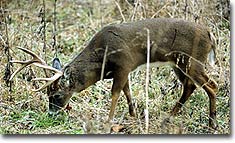Toliver
Senior Member
As part of the land management I want to do with my property, opening up 1 acre areas to plant native grasses is one of them. I want grasses that will provide food for grazers and then seeds for birds. I'm sure insects will also take up residence to also be food. I also want grasses that will provide cover when it gets tall enough. I'm hoping to plant a variety that will mix well and provide a micro-habitat to enhance the wildlife that visits my property.
I have 32 acres that is currently mostly scrub trees that grew back naturally after the property was logged about 18-20 years ago. I know 32 acres isn't going to do a whole lot but I'm hoping they will just be nice looking areas that will enhance the esthetics of the property if nothing else.
Also part of my management plan is to kill sweetgums and privet as I can.
The plan is to grade out three 1 acre clearings and plant the native habitat and then just let nature do its thing.
I will do some other small openings and plant trees that will provide good food for deer and other critters.
Eventually there will be a 3-5 acre pasture but that will be planted in grass conducive to domestic livestock grazing.
Has anyone done anything like this that can share the types of grasses you planted, where you obtained the seeds and how well it worked both in terms growth and germination rates and habitat enhancement with what level wildlife usage increased, if any.
Thanks!
And if @C.Killmaster has any insight or advice that's always a bonus!
I have 32 acres that is currently mostly scrub trees that grew back naturally after the property was logged about 18-20 years ago. I know 32 acres isn't going to do a whole lot but I'm hoping they will just be nice looking areas that will enhance the esthetics of the property if nothing else.
Also part of my management plan is to kill sweetgums and privet as I can.
The plan is to grade out three 1 acre clearings and plant the native habitat and then just let nature do its thing.
I will do some other small openings and plant trees that will provide good food for deer and other critters.
Eventually there will be a 3-5 acre pasture but that will be planted in grass conducive to domestic livestock grazing.
Has anyone done anything like this that can share the types of grasses you planted, where you obtained the seeds and how well it worked both in terms growth and germination rates and habitat enhancement with what level wildlife usage increased, if any.
Thanks!
And if @C.Killmaster has any insight or advice that's always a bonus!


